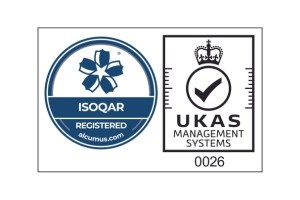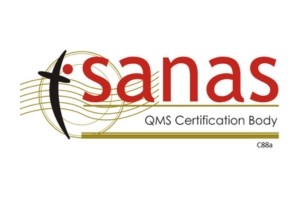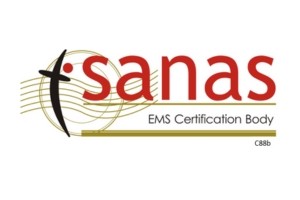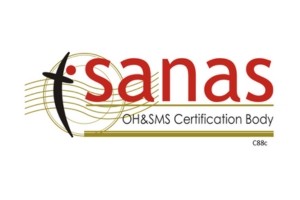There are six (6) implementable clauses within ISO 45001:2018
Occupational Health and Safety Management Standard.
ISO 14001:2015 Environmental Management Systems – requirements with guidance for use
An organization may want to improve its environmental performance but find it difficult to do so in an efficient and effective manner. ISO 14001:2015 is a recognized method for identifying and addressing environmental performance. With over 300,000 certifications issued across 171 countries, the standard is the most widely adopted environmental management system worldwide.
There are a number of reasons why an organisation chooses to implement an environmental management system. These reasons include:
- To demonstrate management commitment;
- Responding to pressure from interested parties (stakeholders);
- Acting in a socially responsible manner;
- Reducing the risk of prosecution;
- To meet regulatory requirements including permits.
This series of blogs aims to assist you to understand the requirements of ISO 14001:2015.

Clause 4: Context of the organization
Clause 4 focuses the organization on defining what it is and does, and what can affect its ability to manage its environmental responsibilities to achieve intended outcomes.
Intended outcomes include:
- Enhancing the organization’s environmental performance;
- Conforming with compliance obligations;
- Achieving its environmental objectives

4.1 Understanding the organisation and its context
The organization must understand the internal and external issues that can positively or negatively affect its environmental performance including, organizational culture and structure, the external environment including cultural, social, political, legal, financial, technological, economic, market competition and natural factors of significance to its performance.
The company will be required to identify all relevant internal and external issues including conditions, characteristics or changing circumstances that can affect its environmental management system and then address those requiring further attention.
External issues include the following:
- The cultural, social, political, legal, financial, technological and economic conditions in which the company operates, whether at international, national, regional or local level;
- The legislative framework in which the organization operates including statutory, regulatory and other forms of legal requirements;
- Environmental conditions affected by the organization or which affect the organization (e.g climate change, air quality, water quality or land contamination);
- Competition and market conditions;
- Key drivers and trends relevant to the industry or sector in which the organization operates.
Internal issues include:
- The size and complexity of the organization and the nature of activities conducted;
- The strategic direction of the organization, its policies and objectives;
- Organizational governance and structure, roles and accountability;
- The capability and capacity of the organization in terms of resources, knowledge and competence (e.g. capital, employee competencies, processes, systems and technologies);
- Information systems: information flows and decision-making processes (both formal and informal) and the time frame within which they are accomplished;
- The process for introducing new products, materials, services, tools, software, premises and equipment;
- Organizational style and culture of the organization;
- The form and extent of contractual relationships, including outsourced activities;
An understanding of the organization and its context can be achieved at a strategic level by using techniques such as SWOT (Strengths, Weaknesses, Opportunities and Threats) analysis, and PESTLE (Political, Economic, Social, Technological, Legal, and Environmental) analysis. Alternatively a simpler approach, such as brainstorming and asking, “what if” questions may be used.

A formal process or documented information is not required in order to satisfy the requirements of this sub-clause – the onus is on each organization is to adopt the approach which best suits its circumstances. Regardless of the approach adopted, the organization must develop an understanding of its context, and guide its efforts to plan, implement, maintain and continually improve its environmental management system.
It is recommended that the organization documents and periodically updates the process and its results as necessary.
The results can be used to assist the organization in:
- Setting the scope of its environmental management system;
- Determining the risks and opportunities that need to be addressed;
- Developing or enhancing its environmental policy;
- Establishing its environmental objectives;
- Understanding the needs and expectations of interested parties;
- Fulfilling its compliance obligations
4.2: Understanding the needs and expectations of interested parties
Previously we covered Clause 4.1 Understanding the organization and its context. We discussed the requirement for the organization to understand the internal and external issues that can impact in a positive or negative manner on its environmental performance. Such issues include organizational culture and structure, and the external environment including cultural, social, political, legal, financial, technological, economic, market competition and natural factors of significance to its performance.

Consideration of the above will facilitate the identification of interested parties and their needs and expectations. If interested parties and their requirements are not identified there is a danger of falling short of their expectations.
ISO 14001 defines an interested party as “a person or organization that can affect, be affected by, or perceive themselves to be affected by a decision or activity”.
ISO 14001 requires the organization to determine:
- The interested parties relevant to the environmental management system;
- The relevant needs and expectations or requirements of interested parties;
- Which or these needs and expectations are or could become compliance requirements
A variety of means may be used to identify interested parties, which include:
- Noting who has expressed an interest in your operations;
- Structured brainstorming workshops;
- Using interviews and questionnaires;
- Asking employees, including managers and public relations personnel;
- Asking executives and heads of departments who is important to your business;
- Asking the question “who are we required to provide information to because of a law, regulation, permit or licence?”
Interested parties may include:
- Employees and Employee Families;
- Regulatory authorities such as Local Authorities, EPA, SEPA and the Environment Agency;
- Owners, Shareholders and Parent Company;
- Suppliers, Contractors and Subcontractors;
- Clients/Customers;
- Investors and Bankers;
- Insurers;
- The Media;
- Local Community and Neighbours of the Organization;
- The General Public;
- The Emergency Services;
- Non-Governmental Organizations (NGOs) such as Greenpeace and Friends of the Earth;
- Professional bodies for Environmental Practitioners;
- Environmental Management Professionals
Some needs and expectations are mandatory because they have been incorporated into laws and regulations. The organization may also subscribe to voluntary initiatives or adopt the requirements of interested parties. Once the organization adopts these needs and expectation, it must ensure that they are addressed when planning and establishing the Environmental Management System.
The organization should take the time to understand the relevant interested parties’ needs and expectations and determine those relevant to the Environmental Management System, which should be addressed.

4.3: Determining the scope of the Environmental Management System
Clause 4.1 requires the organization to understand the internal and external issues that can impact in a positive or negative manner on its environmental performance including organizational culture and structure, and the external environment including cultural, social, political, legal, financial, technological, economic, market competition and natural factors of significance to its performance.
Clause 4.2 requires the organization to identify relevant interested parties, their needs and expectations.
Once the organization has determined and assessed its internal and external and external issues and identified the needs and expectations of relevant interested parties, it should define the physical and organizational boundaries and applicability of the Environmental Management System.
The scope of the Environmental Management System may be the whole organization or specific identified functions or sections of the organization. If the organization makes a statement that it conforms to ISO 14001, it must make the scope of the management system available to ensure it is clear to interested parties which parts of the organization are covered.
The scope of the management system should include everything under the organization’s control or influence that could impact on its environmental performance. The credibility of the organization’s Environmental management system will largely depend on the extent of the defined boundaries. Under no circumstances should the scope be used to exclude activities, products or services that have or could have the potential to impact the organization’s environmental performance or evade its compliance requirements.
The scope is a factual statement of the organization’s operations or business processes to be included within its environmental management system boundaries.
Once the scope is defined, the concept of ‘organization’ is limited to what the scope covers, e.g. if the scope of the environmental management system is limited to a particular function or section of the organization, the remainder of the organization is then considered to be an external provider or other interested party.
The organization should maintain the scope of the environmental management system as documented information and make it available to interested parties. The method of maintaining the scope is not prescribed by ISO 14001, therefore the organization will need to determine the most suitable method, e.g. using a written description, inclusion on a site map, an organizational diagram, a web page, or posting a public statement of its conformity. When documenting its scope, the organization should consider using an approach that identifies the activities or processes involved, the products or services that ensue, and the location(s), where they occur.

4.4: Environmental Management System
Clause 4.4 requires the organization to establish, implement, maintain and continually improve its environmental management system, including the processes needed and their interactions.
The environmental management system should reflect the context of the organization, be proportionate to its size and complexity and be properly resourced.
An environmental management system should be viewed as an organizing framework that should be continually monitored and periodically reviewed to provide effective direction for an organization’s responses to changing internal and external issues.
The environmental management system should be aligned and integrated with other business processes to ensure that environmental performance is not compromised in order that other business objectives can be achieved.
The organization should consider the application of a PDCA approach towards its environmental managements system as follows:
- Plan – decide what the organization wants to achieve (considering internal and external issues, the needs of interested parties, and risks and opportunities), and put in place the necessary processes and resources.
- Do – put the plans into action.
- Check – monitor and measure processes and performance against requirements and what you want to achieve.
- Act – take actions to deal with non-conformities and to improve environmental performance.
Join our mailing list to receive upcoming posts: http://www.isoqar.co.za/





